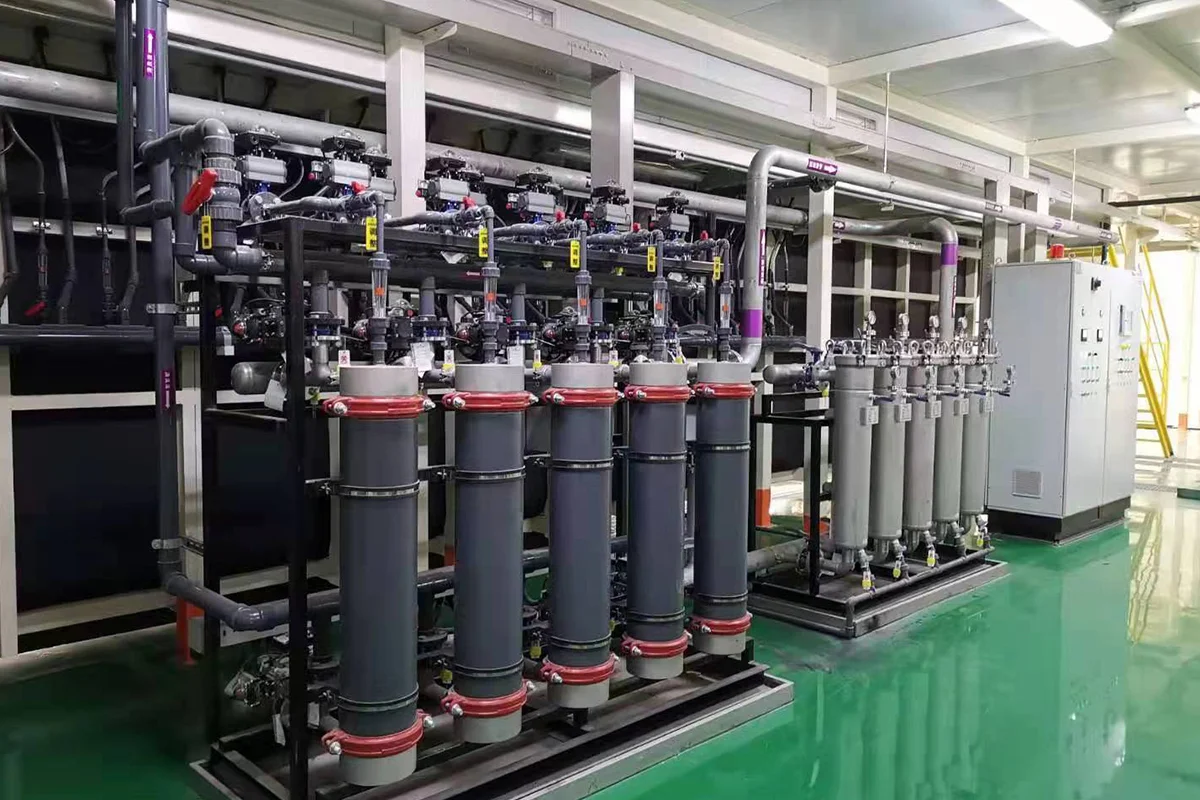
Clear records
history record

Products
Contact
Electrophoretic Ultrafiltration Equipment
Electrophoretic Ultrafiltration Equipment
I. Introduction
Electrophoretic ultrafiltration equipment is a separation device that combines electrophoresis and ultrafiltration technologies. It is mainly used for separating, purifying, and concentrating macromolecules in solutions. This equipment is widely applied in industrial manufacturing, biopharmaceuticals, and environmental protection.
II. Application Areas
1. Environmental Engineering
Wastewater Treatment: Removes heavy metals and organic pollutants.
Seawater Desalination: Pre-treatment to remove suspended solids and organic matter.
2. Chemical Industry
Catalyst Recovery: Separation and recovery of catalysts.
Polymeric Materials: Separation and purification of polymeric compounds.
3. Metal Products
Metal Coating: Used in the electrophoretic coating of metal components to ensure optimal electrophoresis performance.
III. Technical Overview
1. Basic Principles
Uses a semi-permeable membrane to separate substances based on molecular size and shape, retaining macromolecules while allowing small molecules and solvents to pass through.
2. Core Process
Ultrafiltration Membrane: The liquid in the electrophoretic tank passes through the ultrafiltration membrane, separating paint particles from water-soluble impurities.
Filtrate Recovery: The recovered filtrate can be reused in the electrophoretic tank, reducing waste.
IV. Technical Advantages
High Separation Efficiency: The combination of electrophoresis and ultrafiltration enables efficient separation and purification of complex samples.
High Resolution: Electrophoretic technology provides high-resolution separation, while ultrafiltration achieves precise molecular weight cut-off, enhancing overall separation accuracy.
Ease of Operation: An automated control system simplifies the workflow, reducing human error and improving experiment reproducibility.
Wide Applicability: Suitable for various sample types and experimental needs, with broad applications in metal products and environmental monitoring.
Fast Processing: High processing speed shortens experiment time and increases efficiency.
Low Energy Consumption: Designed for energy efficiency, reducing operational costs while meeting environmental standards.
High Reliability: The equipment offers strong stability and durability, reducing failure rates and extending service life.
V. Development Trends
1. Efficiency and Automation:
Higher Efficiency: Continuous improvements in processing speed and separation efficiency enable the handling of larger sample volumes.
Automation: Automated control systems and intelligent interfaces reduce manual intervention, enhancing ease of operation and experiment consistency.
2. Modular Design:
Equipment is becoming more modular, allowing users to flexibly combine different functional modules according to their needs, improving adaptability and scalability.
3. Miniaturization and Portability:
Devices are evolving toward smaller and more portable designs, making them suitable for laboratory and on-site applications, particularly in space-constrained environments.
4. Green and Eco-Friendly Design:
More emphasis is placed on environmentally friendly designs to reduce energy consumption and waste generation, aligning with sustainable and green chemistry principles.
5. Multifunctional Integration:
Equipment is increasingly capable of performing multiple functions, such as electrophoresis, ultrafiltration, concentration, and desalination, enhancing operational efficiency.
6. New Material Applications:
The use of advanced membrane and electrode materials enhances separation performance and durability, with features such as anti-fouling properties and resistance to high temperatures and pressures.










